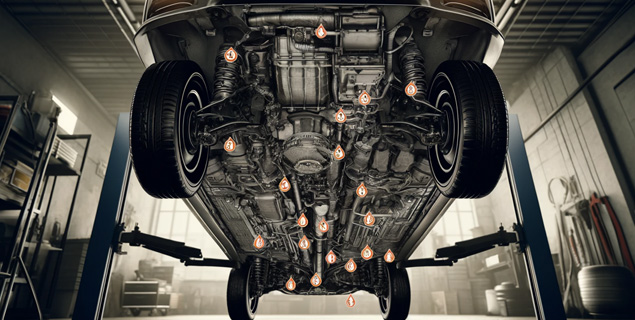before start Oil Leak PTS first we move to introduction. The control of oil leaks in the petroleum industry is a major concern that affects environmental safety, operational efficiency and economic stability.
Oil Leak PTS
Effective oil spill management relies on understanding and controlling key factors: pressure, temperature, and safety (PTS). Each element plays an important role in preventing leaks and ensuring that when they do occur, they respond quickly. This article examines in detail how PTS principles have been applied in the industry for leak protection by examining the technologies, procedures and safety measures necessary for the modern petroleum industry
Pressure Management in Oil Systems
Pressure within oil extraction and transportation systems must be meticulously controlled to prevent leaks and ensure the structural integrity of pipelines and reservoirs. Excessive pressure can lead to catastrophic failures, causing not only financial losses but also significant environmental damage. Key aspects of pressure management include:
Pressure Control Technology:
Advanced pressure sensing and automatic oil containment systems are an integral part of the modern oil industry. This technology helps keep pressure within safe limits and triggers an immediate response if abnormal pressure is detected.
Normal Pressure Related Failures:
Understanding failure mechanisms such as pipe sting and seal cracking is important. Regular stress testing and real-time monitoring can identify potential weaknesses before they cause leaks.
Regulatory Compliance and Standards:
Industry standards dictate strict pressure management protocols. Compliance with these standards is not just about legal adherence but also about minimizing risk and enhancing system reliability.
Temperature Considerations for Oil Integrity
Temperature control is paramount in maintaining the structural integrity of oil transport and storage systems. Fluctuations in temperature can have profound effects on the physical properties of the materials used in the oil industry, potentially leading to failures and leaks. Key aspects of temperature management in oil systems include:
Impact of Temperature Fluctuations:
Temperature changes can affect the viscosity of oil and the expansion or contraction of materials used in pipelines and tanks. This can lead to increased strain on joints and seals, making them more susceptible to leaks.
Thermal Control Systems:
Advanced thermal regulation technologies are used to maintain optimal temperatures in oil systems. These include insulated pipelines, heated or cooled storage tanks, and automated temperature control units that adjust settings based on real-time data.
Monitoring Technologies:
Continuous monitoring with temperature sensors placed strategically throughout the oil infrastructure helps detect early signs of abnormal temperature changes. This enables timely interventions to prevent material failures.
Safety Protocols for Preventing Oil Leaks
Safety protocols form the third pillar of effective oil leak management, focusing on systematic procedures and safety practices designed to prevent leaks. Establishing robust safety measures is critical for ensuring operational safety and environmental protection. Essential components of safety protocols in oil leak management include:
Regular Maintenance and Inspections:

Scheduled maintenance and routine inspections are critical for identifying wear and tear or any potential issues that could lead to leaks. These include checking pipe corrosion, seal integrity, and system pressures and temperatures.
Safety Training and Awareness:
Ongoing training programs for personnel involved in oil operations ensure that all team members are aware of the best practices and safety procedures. This includes training on emergency response strategies and the use of safety equipment.
Case Studies of Effective Safety Measures:
Real-world examples, such as the implementation of double-walled tanks and automated leak detection systems, demonstrate the effectiveness of safety protocols. These case studies provide valuable lessons on how rigorous safety measures can prevent leaks and mitigate the impact of any incidents.
Conclusion
Oil Leak PTS mean Integrating Pressure, Temperature, and Safety (PTS) into oil leak management is essential for maintaining the integrity and efficiency of petroleum industry operations. These elements help mitigate risks, ensure compliance with environmental standards, and protect both resources and ecosystems. Industry professionals must continually adopt and refine advanced PTS measures to stay ahead of potential challenges and ensure sustainable practices. Continues oil leak can cause of damage the engine and burning smell from vehicle.

